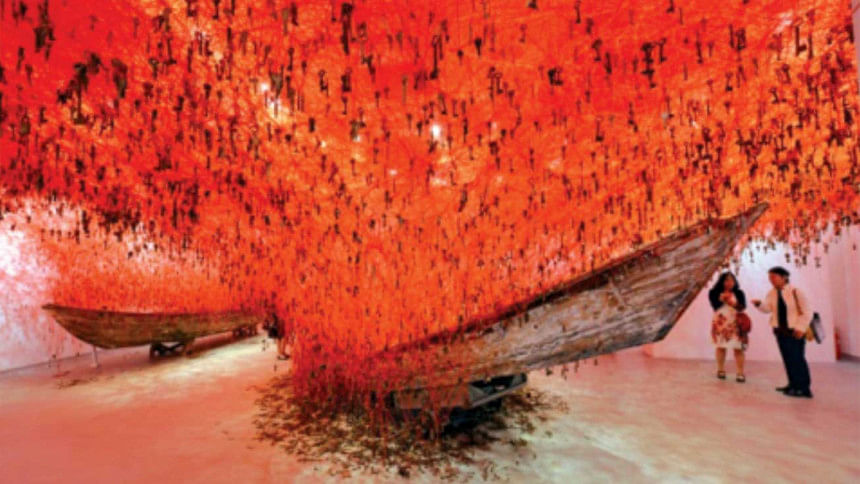Art that speaks to the times

The Venice Biennale is widely accepted as "the art world's greatest show". I had the privilege to attend the opening week, with the theme Enwezor chose for its central exhibition, "All the world's futures", reflecting his own preoccupation with "the state of things" - in a world where war and destruction has not only not spared art, but our cultural heritage is under attack in a very targeted sense. One has to merely recount the incidents of the Taliban blowing up the Bamiyan Buddha statues, or the looting of Iraq's great heritage from its museums, or the so-called Islamic State's wanton destruction of various artistic assets in the areas it has managed to bring under its control.

This year's Biennale is made up of over 80 national shows and a central exhibition curated by the artistic director. Titled "All the World's Futures", Enwezor's exhibition included work by 136 artists from 53 countries—much of it concerned with the "politics of the image", as The Economist described it.

The Iranian pavilion, hosted at the Calle San Giovanni, is one of the national pavilions attracting a lot of attention this year - perhaps another reflection of how the Biennale speaks to the times. The lifting of sanctions by the Western powers in return for a halt to its alleged nuclear bomb-making activities, all subject to a deal set to be signed in the summer, is expected to herald the return of Iran into the international fold from its present by-and-large pariah status, and the contributions of the Iranian artists to the Biennale seem to reflect this, framing their future through the past.

One of the more individualistic exhibitions that has people talking this year in Venice happens to be 'Frontiers Reimagined', curated by Calcutta-born Sundaram Tagore, that has brought together some 70 works of art by 44 artists from 25 countries. Yet the highlight of the exhibition, which is housed in an elegant 16th-century palace, the Museo di Palazzo Grimani, at least for me is that it includes paintings by Rabindranath Tagore. Sundaram, who now owns galleries in New York, Hong Kong and Singapore, is "the great-grandson of the fourth brother, Hemendranth Tagore" but does not brag about being a descendant of the poet. Included are a bust of Tagore by Jacob Epstein that comes from Sundaram's own collection, plus three paintings on loan from Nirmalya Kumar, a professor at the London Business School but now based in Mumbai as head of strategy at the Tata group.

Bangladesh took part in the previous two editions of the Venice Biennale, with very different results. This year therefore, Bangladesh doesn't have a presence in this greatest of the art world's many events. The next Biennale will be held in 2017, and we hope Bangladeshi art community can get its act together to truly give itself a chance of capturing the world's imagination, the next time that the art world's great and good descend upon Venice.
The writer is the Chairman, Gallery Cosmos, Cosmos Atelier '71.


 For all latest news, follow The Daily Star's Google News channel.
For all latest news, follow The Daily Star's Google News channel. 



Comments